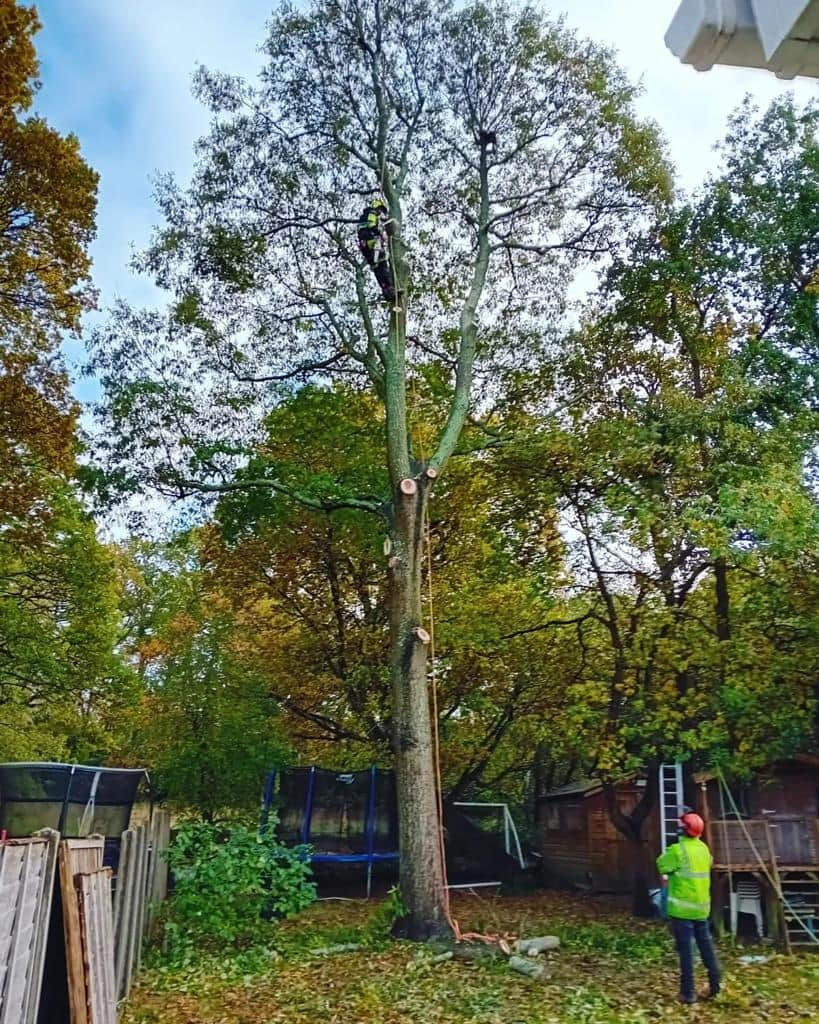Introduction: At LM Tree Surgery Southsea, we understand the importance of proper tree care to ensure the health and beauty of your landscape. Pruning evergreen trees requires a different approach compared to deciduous trees. Proper pruning enhances the aesthetic appeal of evergreens and promotes their health and longevity. In this blog post, we will discuss the best practices for pruning evergreen trees, ensuring your trees remain vibrant and healthy all year round.
Why Prune Evergreen Trees?
Pruning evergreen trees offers several benefits:
- Promotes Healthy Growth: Removing dead or diseased branches encourages new growth and prevents the spread of disease.
- Enhances Appearance: Pruning helps maintain the natural shape and beauty of the tree.
- Improves Light Penetration: Thinning the canopy allows more light to reach the lower branches and plants beneath the tree.
- Prevents Damage: Removing weak or overgrown branches reduces the risk of breakage during storms.
Best Time to Prune Evergreens
The timing of pruning evergreen trees is crucial:
- Late Winter to Early Spring: This is generally the best time to prune most evergreen trees. Pruning during this period minimises stress on the tree and encourages robust new growth in the spring.
- Avoid Late Summer and Early Autumn: Pruning during this time can stimulate new growth that may not harden off before winter, leading to potential damage from cold weather.
- Remove Dead or Diseased Branches Anytime: Dead, damaged, or diseased branches can be removed at any time of the year to prevent further issues.
Pruning Techniques for Different Types of Evergreen Trees
- Conifers (e.g., Pine, Spruce, Fir)
- Crown Thinning: Remove dead, weak, or overcrowded branches to improve light penetration and air circulation. Avoid cutting back to bare wood, as conifers do not regrow from old wood.
- Crown Raising: Remove the lower branches to allow more light beneath the tree. This is particularly useful for large conifers in landscapes.
- Pinching: For species like pine, pinch back the new growth (candles) in spring to control the size and shape without using tools.
- Broadleaf Evergreens (e.g., Holly, Rhododendron)
- Selective Pruning: Remove any dead, damaged, or diseased branches—thin out crowded areas to improve light and airflow.
- Shaping: Maintain the natural shape by lightly trimming the outer branches. Avoid heavy pruning, as it can lead to an unsightly appearance.
- Hedge Plants (e.g., Boxwood, Yew)
- Shearing: Regular shearing maintains the shape and density of hedge plants. Be careful not to cut too deeply, which can create bare spots.
- Rejuvenation Pruning: For older, overgrown hedges, consider rejuvenation pruning by cutting back one-third of the oldest stems to the ground each year for three years.
General Pruning Tips
- Use the Right Tools: Ensure your pruning tools are sharp and clean to make precise cuts and reduce the risk of disease transmission.
- Make Clean Cuts: Cut just above a bud or branch collar, and avoid leaving stubs that can attract pests and diseases.
- Avoid Over-Pruning: Never remove over one-third of the tree’s canopy in a year. Over-pruning can stress the tree and reduce its vigour.
- Disinfect Tools: Clean your tools between cuts, especially when working on diseased branches, to prevent the spread of pathogens.
Conclusion: Proper pruning of evergreen trees is essential for maintaining their health and appearance. By following these best practices, you can ensure your evergreens thrive and contribute to the beauty of your landscape.
Call us on: 023 8235 3277
Click here to find out more about LM Tree Surgery Southsea
Click here to complete our contact form and see how we can help you with your tree’s needs.

